Lower crossed syndrome: how sitting will ruin your hips
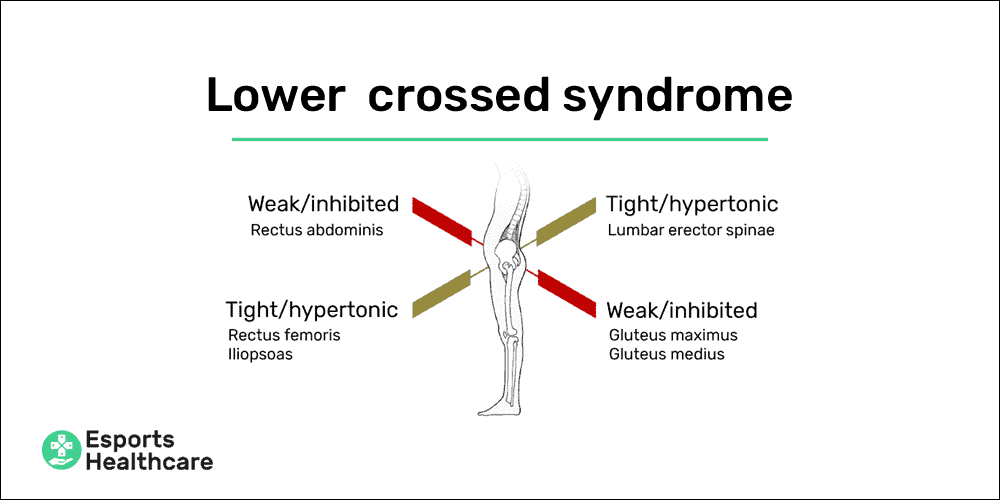
Key points
Disclaimer
This information is for educational purposes only and is not intended to replace the advice of your doctor. Esports Healthcare disclaims any liability for the decisions you make based on this information.
The information contained on this website does not establish, nor does it imply, doctor-patient relationship. Esports Healthcare does not offer this information for diagnostic purposes. A diagnosis must not be assumed based on the information provided.
What is lower crossed syndrome?
Lower crossed syndrome is a postural imbalance that occurs in the muscles of lower back, pelvis, and hip joints. This condition is often a result of prolonged sitting and will be exacerbated by poor posture.
While sitting, some muscles are stuck in a shortened position—a position which begins to take hold. At the same time, other muscles are stuck in a lengthened position, and these muscles tend to become weak or inhibited.
Pertinent anatomy
It’s important to know some basic anatomy of the lower back, pelvis, and hips to understand lower crossed syndrome. First, you need to understand some of the bony anatomy (which includes the joints). Then, you can learn the muscles involved and how they are affected.
Bony anatomy
To begin, the bones of the lower back are known as the lumbar spine, which is comprised of 5 separate bones named by the letter “L” and their corresponding number from top to bottom: L1 to L5.
The lowest of these, the L5 vertebra, attaches to the sacrum—the last bone in the spinal column that bears the weight of your body. One more bone in the spinal column attaches below the sacrum and is called the coccyx, but this bone does not carry any weight. The coccyx is often called the tailbone.
The sacrum sits between the left and right pelvic bones, and each half of your pelvis has three parts:
- Ilium: the back, upper portion of your pelvis; each ilium attaches to the sacrum in joints on either side known as the sacroiliac joints
- Ischium: the lower portion of your pelvis; these are the parts of the pelvis you sit on; in yoga, instructors often refer to these as the “sits bones”
- Pubis: the front portion of your pelvis; these bones attach to each other—a joint called the pubic symphysis
Lastly, the femur bones are the thigh bones. On each side, the femur attaches to the pelvis, and these are your hip joints.
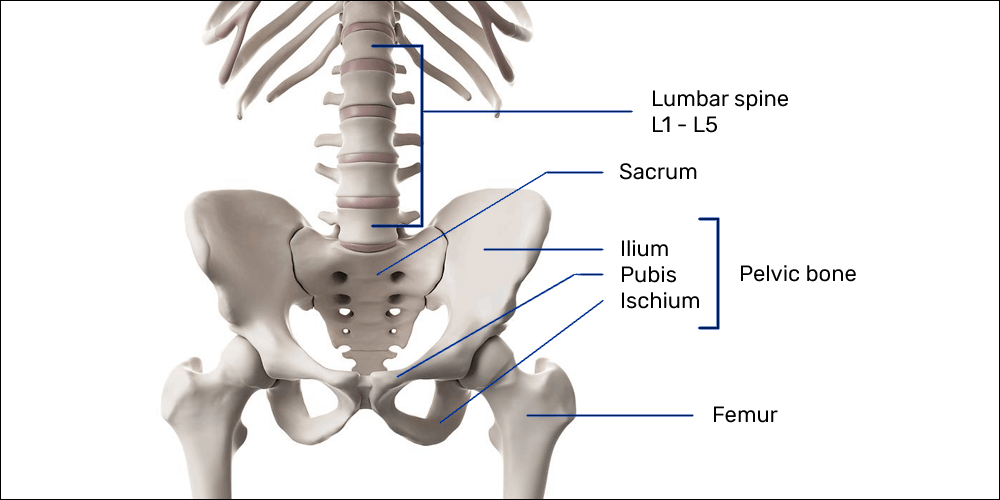
Muscles involved in lower crossed syndrome
The muscles affected in lower crossed syndrome include muscles that attach from the lumbar spine to the pelvis, muscles that attach from the pelvis to the femur, and one muscle that has attachments from the lumbar spine to the femur.
- Lumbar spine to pelvis
- Erector spinae: a group of muscles that extend (bend backwards) and hold your lumbar spine upright, or erect
- Pelvis to femur
- Hip flexors: a group of muscles that pull the thighs to the front of your body (e.g., knee-to-chest)
- Iliopsoas: a hip flexor muscle that has attachments from the inside of the pelvis to the femur
- Rectus femoris: a hip flexor muscle that attaches from the front of the pelvis to the tibia (shin bone; the rectus femoris muscle is part of the quadriceps muscle group)
- Gluteal muscles: a group of muscles that extend (e.g., climbing stairs) and abduct (e.g. side shuffling) your hip joints
- Gluteus maximus: the large muscle of your buttocks that extend your thigh (e.g., climbing stairs)
- Gluteus medius/minimus: the muscles on the upper/outer portion of your buttocks that pulls the thigh outward (e.g., side shuffling)
- Hip flexors: a group of muscles that pull the thighs to the front of your body (e.g., knee-to-chest)
- Lumbar spine to femur
- Iliopsoas: the same hip flexor named above; this muscle has a separate muscle belly that attaches from the lumbar spine to the femur [see image below]
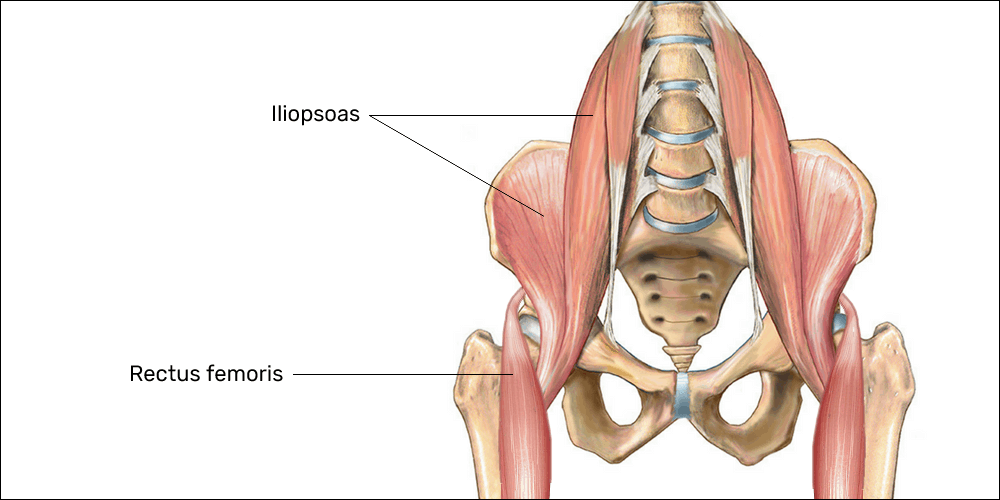
The abdominal muscles—namely, the rectus abdominis (the 6-pack muscles)—are also involved, attaching from the lower portion of the ribs and sternum to the upper portion of the pubic bone.
Pathophysiology
Lower crossed syndrome occurs most often when prolonged sitting creates tightness in some muscles and inhibition of others.
Tight or hypertonic muscles
While sitting, the hip flexor muscles described above are shortened due to the flexed position of the hips. Over time, the muscles begin to take hold in this shortened position.
This response to shortening is described as chronic hypertonicity. A hypertonic muscle is one that has an unconscious, partial contraction. A hypertonic muscle will also have resistance to stretching due to this low-grade contraction.
The tight or hypertonic muscles in lower crossed syndrome include:
- Hip flexors: iliopsoas and rectus femoris
- Lumbar erector spinae
These tight muscles will pull on the bones to which they attach, even when you’re no longer sitting.
Weak or inhibited muscles
While sitting, the gluteal muscles described above are lengthened and both the gluteal muscles and the abdominal muscles are mostly inactive.
Over time, this prolonged inactivity combined with the antagonist muscle tightness creates weakness or inhibition of these muscle groups.
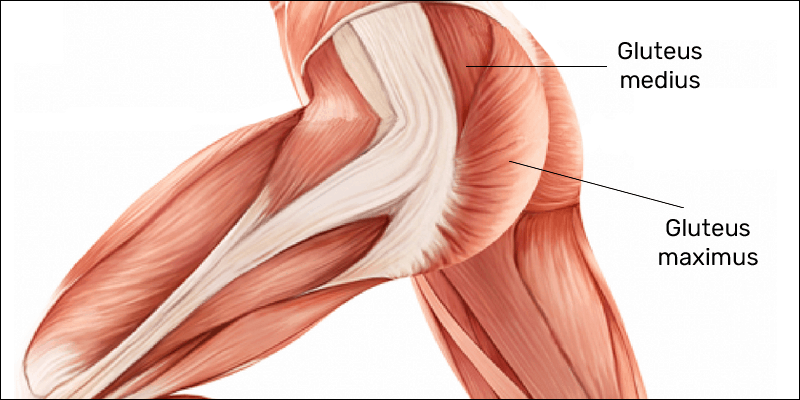
Muscle imbalance
Tightness of the hip flexors and lumbar erector spinae along with weakness or inhibition of the gluteal and abdominal muscles creates a postural imbalance in the lower back and hips.
The postural imbalance noted in lower crossed syndrome is an anterior (forward) rotation of the pelvis and an excessive extension (back bending) in the lumbar spine, known as hyperlordosis. This excessive backwards curve of the lumbar spine may lead to back pain.
Signs and symptoms
As a postural imbalance, lower crossed syndrome does not necessarily present with pain or other symptoms. The signs of lower crossed syndrome are the same details as described in Pathophysiology above.
- Muscular imbalance
- Tight or hypertonic: hip flexors and lumbar erector spinae
- Weak or inhibited: gluteal and abdominal muscles
- Postural imbalance
- Anterior pelvic tilt: forward rotation of the pelvis
- Hyperlordosis: excessive backwards curve of the lumbar spine
- External rotation of the hip: although not the hallmark presentation of lower crossed syndrome, thighs may be rotated outward due to weakness in the gluteus medius and minimus
- Other symptoms may include:
- Lower back pain
- Hip pain
- Decreased range of motion of the hips and lower back
- Feeling tightness or discomfort with hip movements
Common mechanism of injury
The mechanism for the onset of lower crossed syndrome is, most often, simple and straightforward. Prolonged sitting will lead to the muscular imbalance, and this imbalance is exacerbated by poor posture.
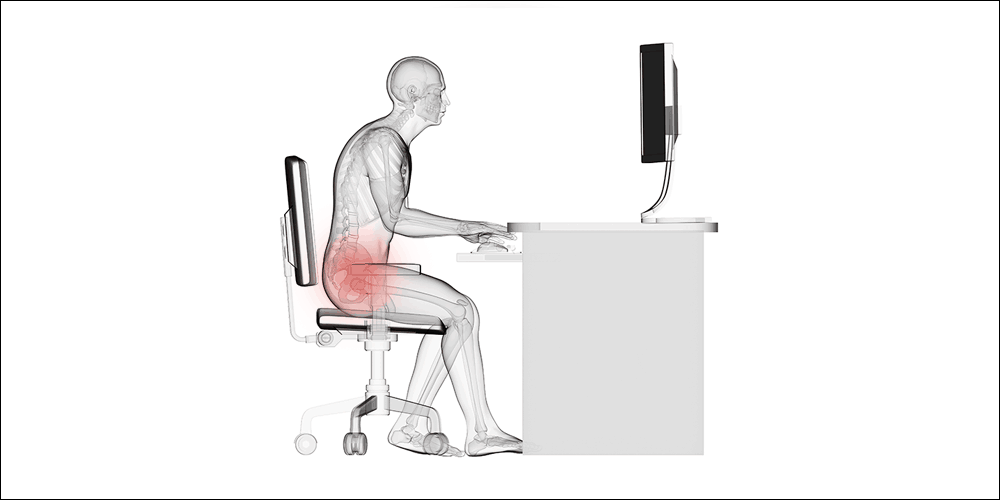
Prevention and rehabilitation
Likewise to the mechanism, prevention is simple and straightforward. First and foremost, check your posture, and avoid prolonged sitting by taking breaks.
However, there are other preventative measures to reduce your risk of developing lower crossed syndrome if you are stuck in a seated position for many hours per day.
Sometimes, a simple reminder can help to keep your body in a better position. However, prolonged sitting—especially in a poor position—will create the muscular imbalances described earlier.
When this happens, simply thinking about sitting more appropriately may still be ineffective. So, we developed Power-Up Posture with 21 exercises and stretches to help improve your posture.
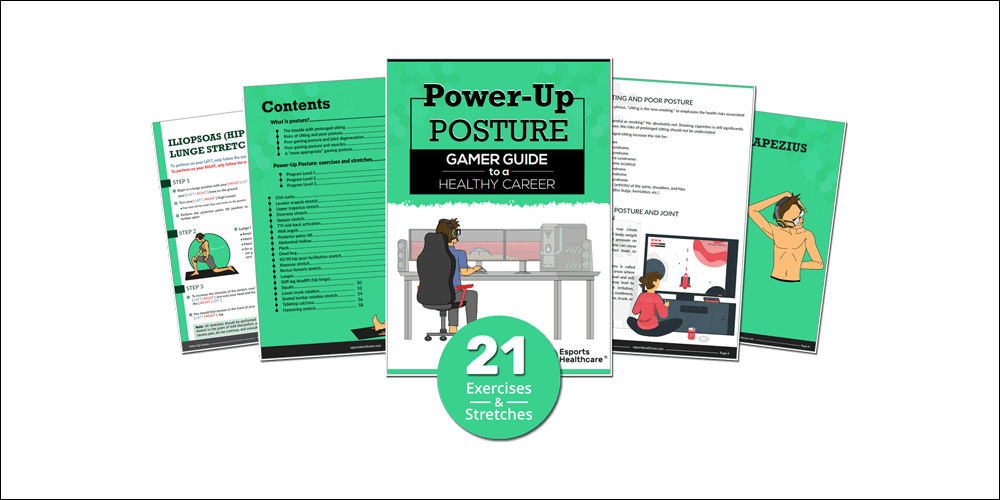
Power-Up Posture: gamer guide to a healthy career
Power-Up Posture is an exercise and stretch program designed to counter the ill-effects of prolonged sitting. The program is effective for both prevention and rehabilitation of lower crossed syndrome.
Power-Up Posture is a comprehensive program to stretch and relax the hypertonic muscles and to stimulate activation and strengthening of the inhibited muscles affected in lower crossed syndrome.
Through participation of this program, you can effectively prevent these muscular imbalances and reduce pain associated with prolonged sitting and poor posture.
